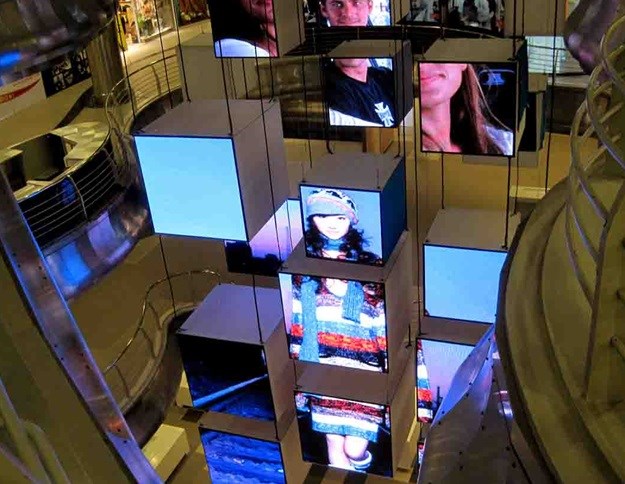Digital sign of the marketing times?
A high-definition screen that displays creative content is no longer enough to drive a return on your marketing investment – these displays need to be placed in the right place, reach the audience at the right time and communicate the right compelling message in order to truly influence purchasing behaviour.

Rob Nelson, owner at Reel2Real Interaction, started his career developing content for interactive CD-ROMs and touch screen kiosks through to DVD animations and digital video content creation for display. He was also instrumental in bringing the first digital installation to South Africa when he developed the content to communicate with audiences using the first plasma screens ever seen in the country – definitely qualified to elaborate on the evolution of digital signage.
Nelson shares some exclusive insights below…
1. Talk us through the main timeline of digital signage in SA.
Nelson: Digital signage started off in South Africa in its basic form in the early 1990s, with Twilight TV running digital displays using TV sets and VHS machines.
By the mid-90s, the industry became a little more sophisticated when the first plasma screens were brought to South Africa. Digital signage was displayed on these screens at the launch of Vodaworld and grew in popularity thereafter as retail stores, restaurants and leisure areas such as golf clubs, used plasma screens to display still images. In 2003, digital signage grew up with the first installation of flight information signage and advertising integrated signage solutions. This opened up the flood gates for the industry and set the bar for digital signage across the country and the globe.
2. Such an interesting arena. Are we keeping up with global trends in this regard?
Nelson: Sadly, after setting the stage for digital signage across the globe, South Africa has since lagged behind the rest of the world. Globally digital signage has grown significantly over the last few years and is anticipated to become a $23 billion industry by 2020 according to research conducted by Markets and Markets.

There are several inhibiting factors that have prevented South Africa from moving forward in the digital signage arena. These include:
- Software costs, which are usually charged in dollars and can be expensive when converting from rands.
- Good content can be expensive to produce and, as a result, many South African companies run content that was designed for other mediums, such as TV commercials or cinema content. This impacts on the quality of the content and doesn’t yield the return on investment that companies expect.
- LED screens can be expensive purchases for South African businesses.
- Expensive and limited connectivity has been an inhibiting factor for a long time, however, as access to various connectivity options becomes available, this is changing.
- As big brands locally are seeing the benefits of digital signage in other markets across the globe, we have started to see an uptake in adoption of this medium as a marketing tool. Already, we are seeing some industries, such as the Quick Service Restaurant (QSR) industry, benefiting from digital signage solutions.
3. How does this differ on the rest of the continent?
Nelson: Some countries in Africa, such as Nigeria and Kenya, are using global digital signage technologies and solutions to leapfrog the South African market, while other countries are lagging behind us. Content is the biggest inhibitor across the continent as it is fairly expensive to produce specific content for digital display purposes.
4. Elaborate on how digital signage can best fit in with the rest of the marketing mix.
Nelson: Digital signage is becoming an integral part of the marketing mix globally, as companies realise the benefit that this medium brings to complementing their broader marketing efforts.

While digital signage can be used to drive recall, it has effectively been used to attract attention, inform and educate consumers and drive audience engagement along the customer buying cycle. New developments such as augmented reality and QR codes give consumers an even more interactive experience and drive further engagement between brands and their audiences.
However, digital signage can only be effective when the content is created specifically for the screens it is to be displayed on and takes the audience’s needs into account. For example, it wouldn’t be effective to display a 30-second commercial on a screen at the traffic lights as the audience probably won’t be able to view the entire advert. To be effective, companies should rather use other mediums such as TV to tell the story, and compliment it with digital signage to attract attention and drive recall.
5. Explain the direct correlation between digital signage and purchasing behaviour.
Nelson: Several research studies have proven that with the right content, displayed for the right amount of time and at the right place, digital signage can have a positive impact on sales. For example, digital signage can be placed along path where purchasers are making their buying decisions and has the ability to drive recall, educate and inform the audience at the most crucial points of the buying cycle. This is supported by a study conducted by SignAd Network, which found that 1 in 5 consumers made unplanned purchases after seeing a digital display.
Impressive stats – if you’ve not yet considered digital signage as part of your retail marketing mix, it’s time to get cracking!






















